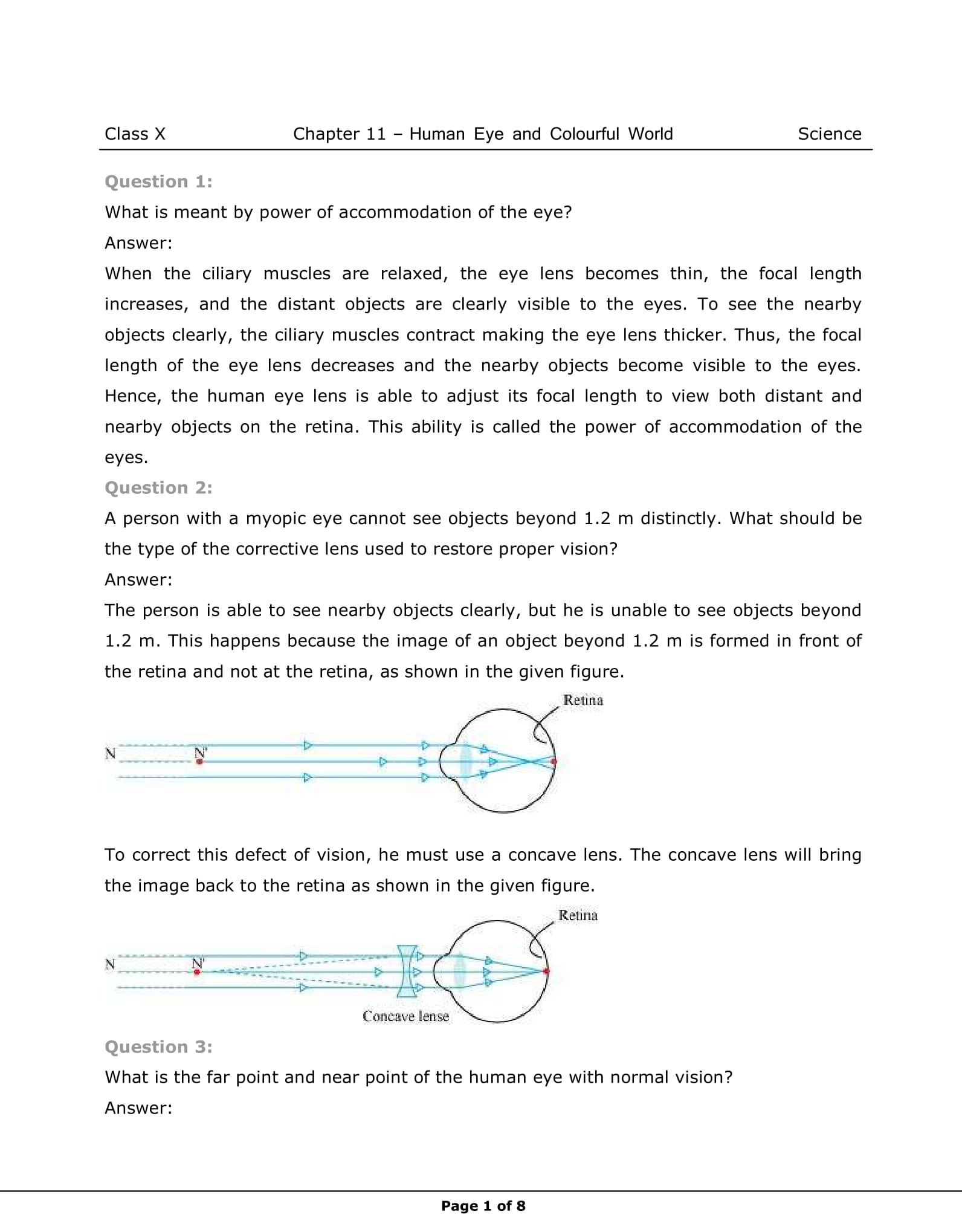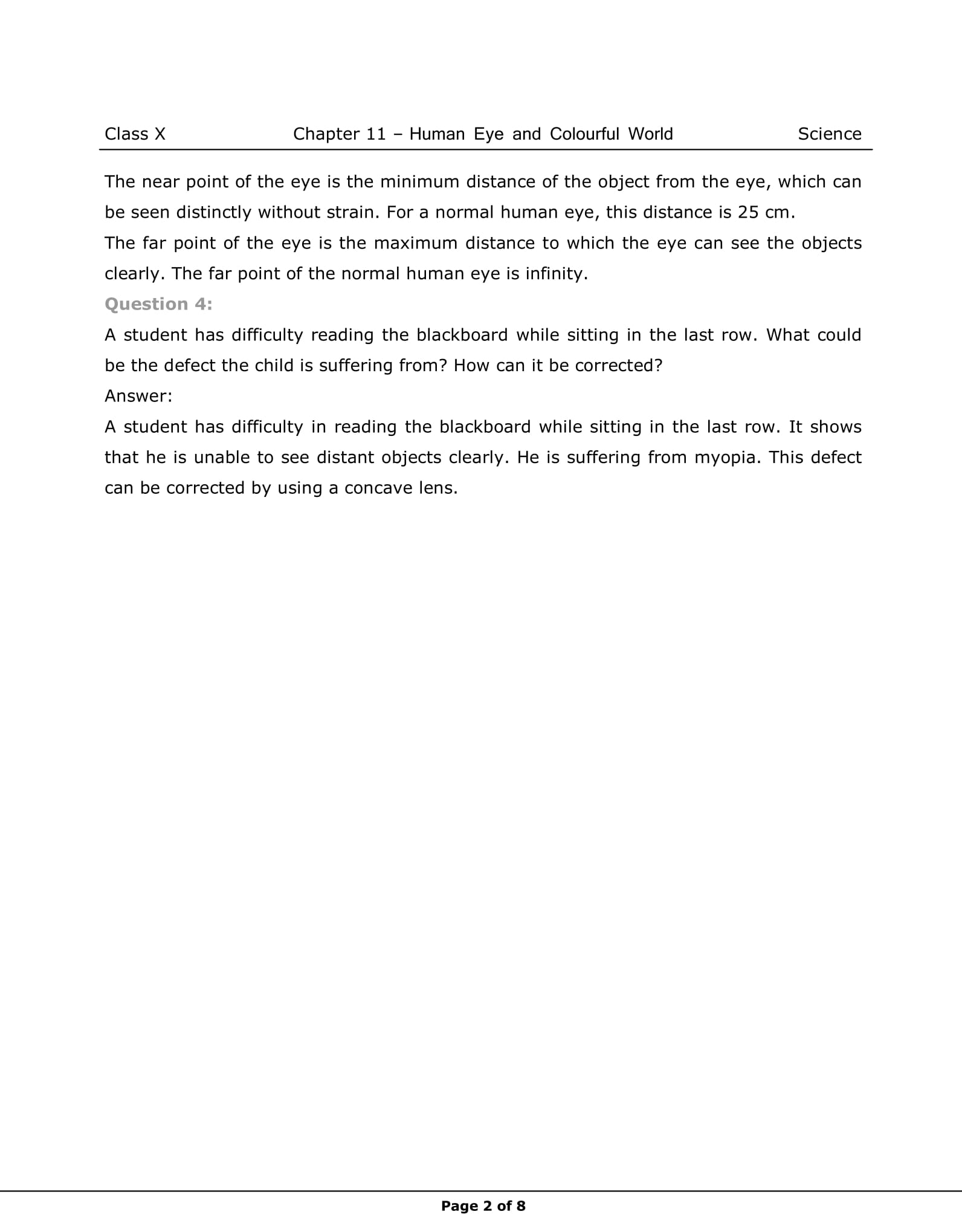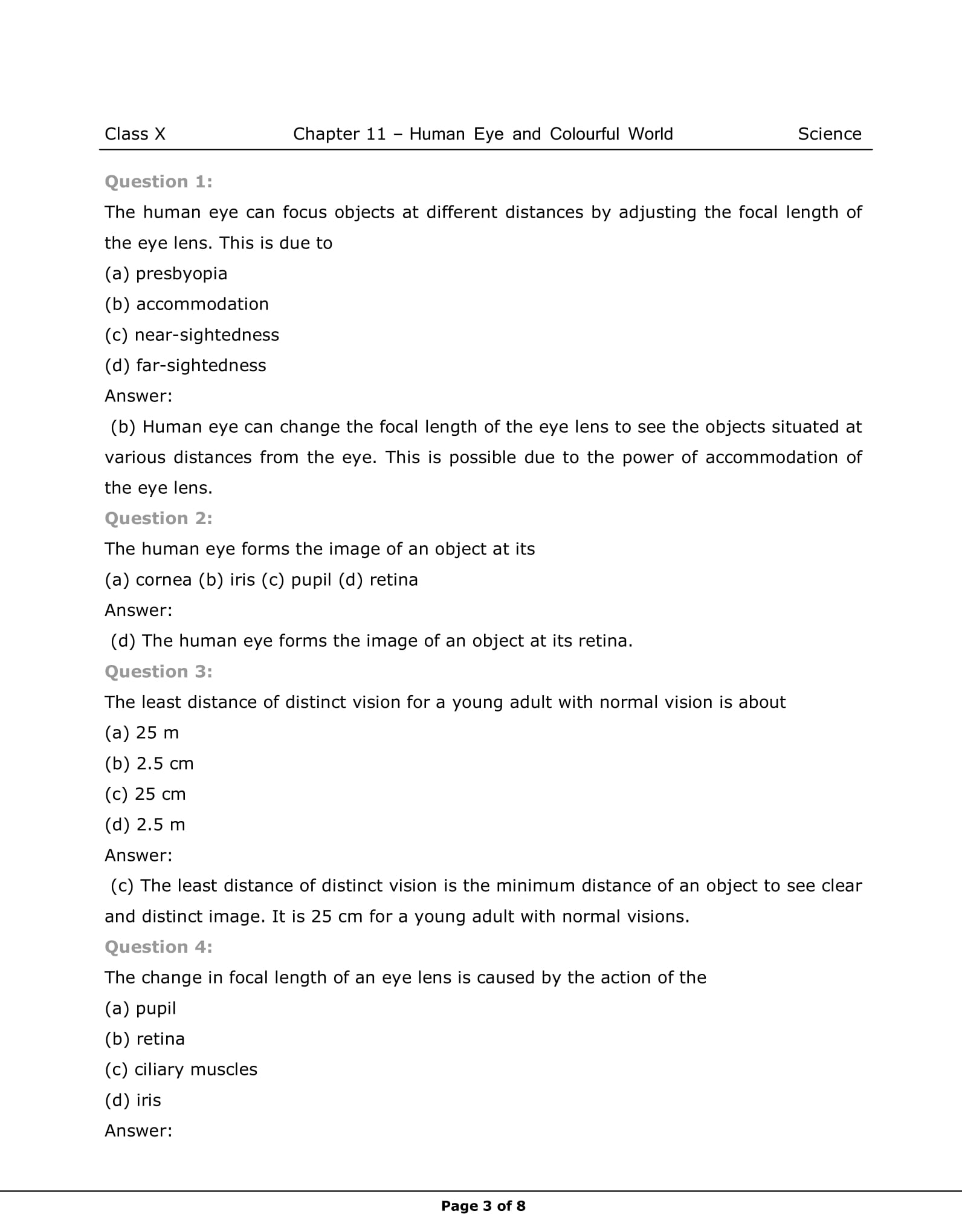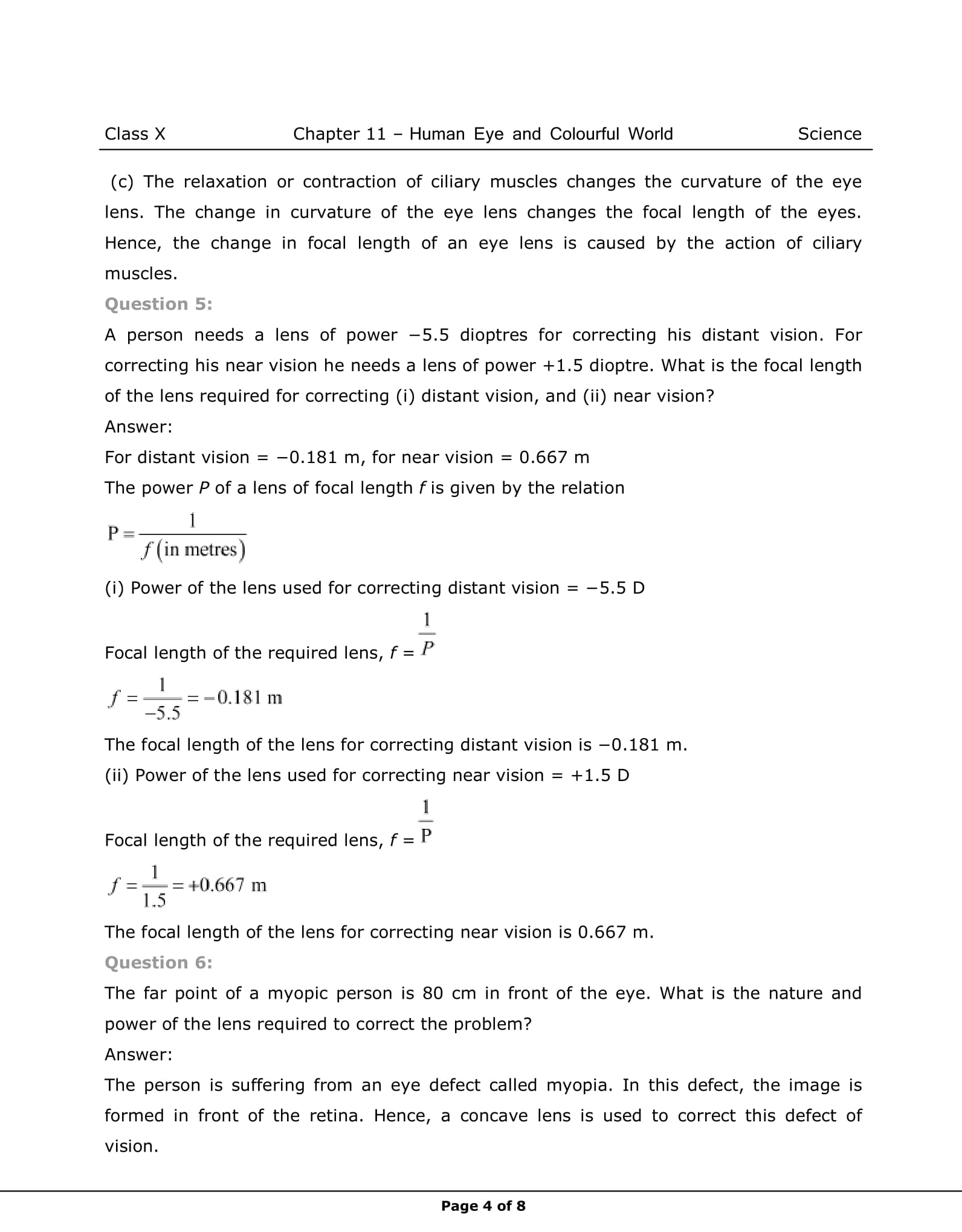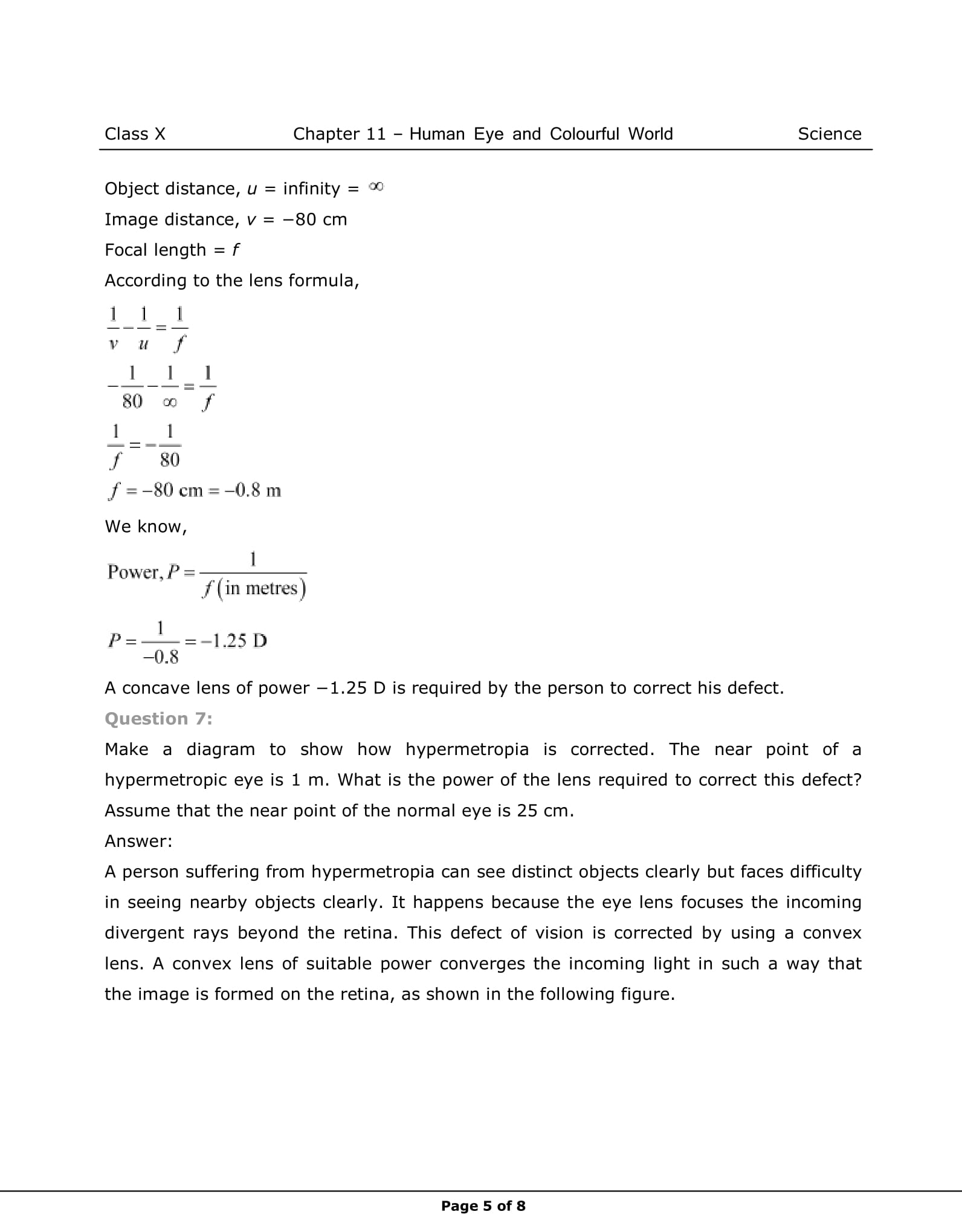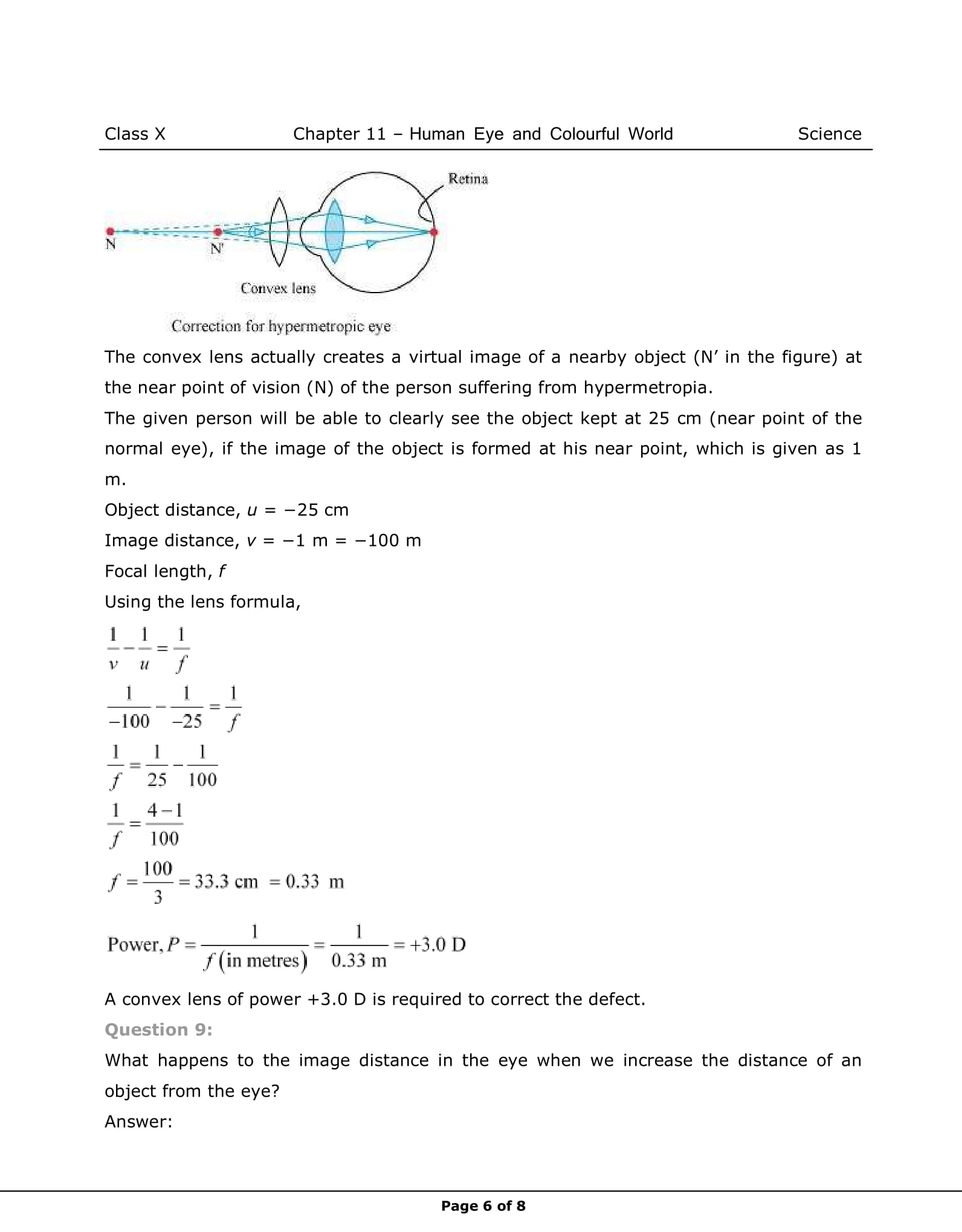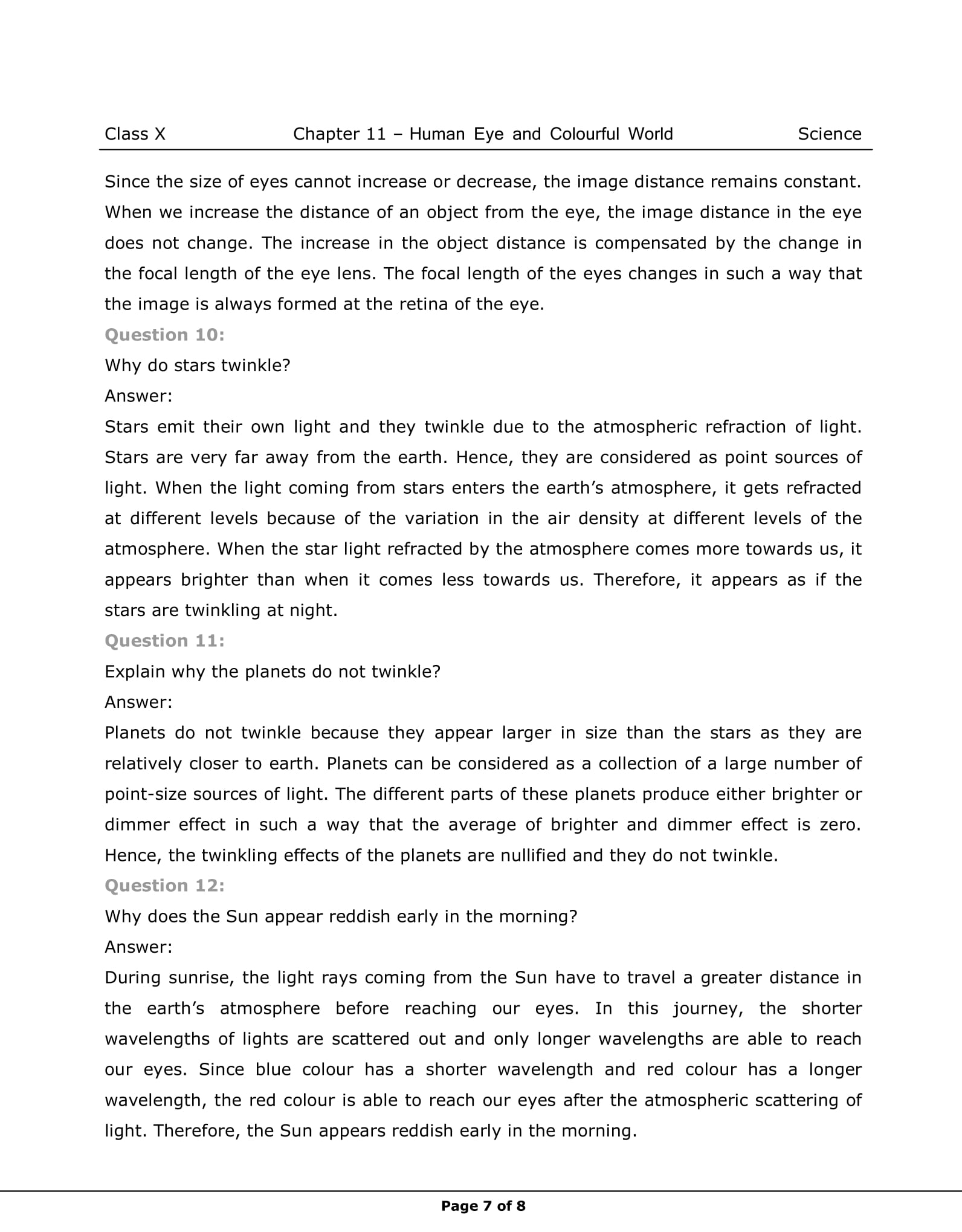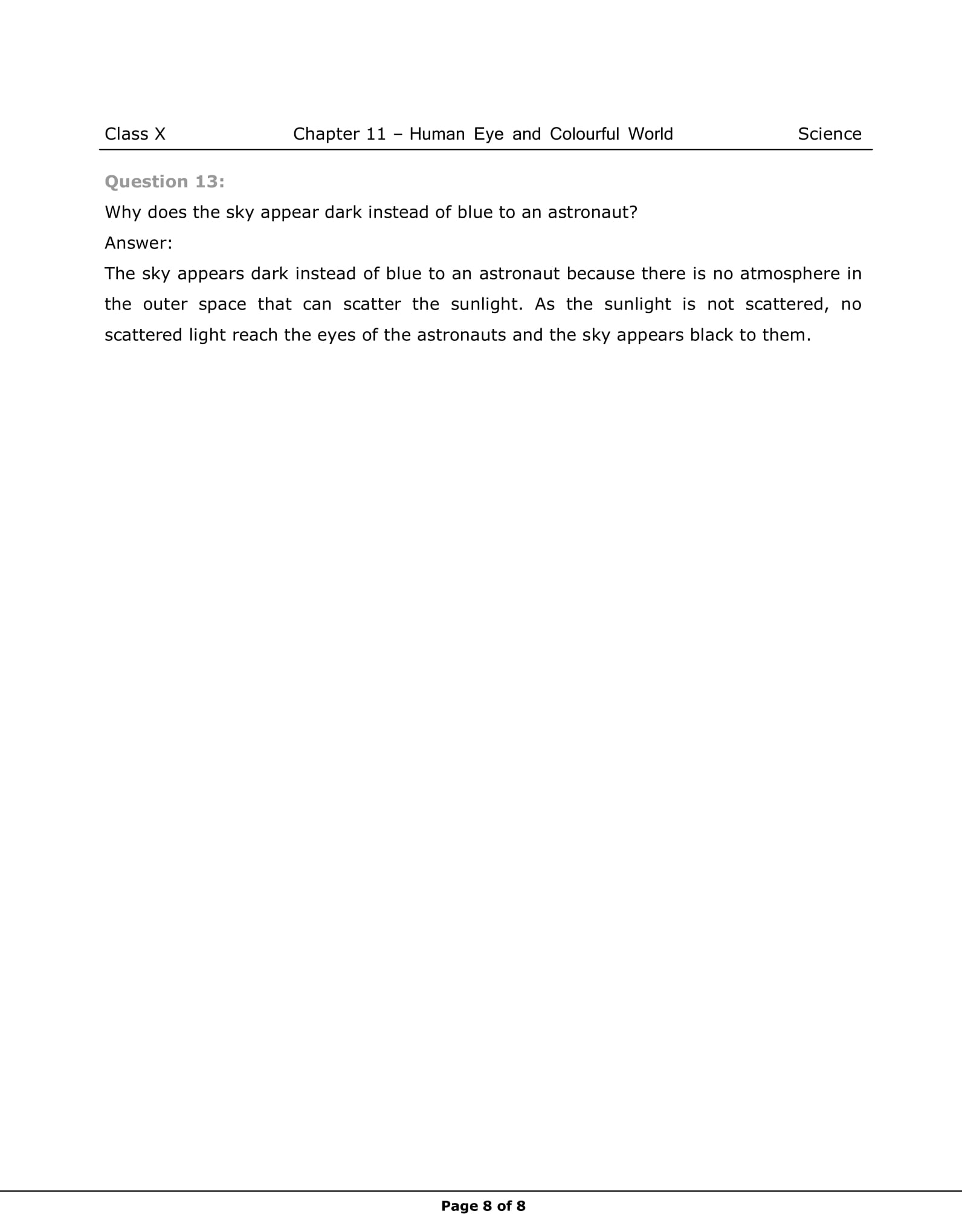NCERT Solutions For Class 10 Science Chapter 11
NCERT Solutions For Class 10 Science Chapter 11 Human Eye and Colourful World - PDF Download
Students find NCERT Solutions for Class 10 Science Chapter 11 Human Eye and Colorful World quite helpful for their CBSE Board Preparation. In this chapter, you will The ability of the eye to focus both near and distant objects, by adjusting its focal length, is called the accommodation of the eye. The smallest distance, at which the eye can see objects clearly without strain, is called the near point of the eye or the least distance of distinct vision. The splitting of white light into its component
The topics and sub-topics in NCERT Solutions for Class 10 Science Chapter 11 Human Eye and Colorful World are:
11.1 THE HUMAN EYE
11.1.1 Power of Accommodation
11.2 DEFECTS OF VISION AND THEIR CORRECTION
11.3 REFRACTION OF LIGHT THROUGH A PRISM
11.4 DISPERSION OF WHITE LIGHT BY A GLASS PRISM
11.5 ATMOSPHERIC REFRACTION
11.6 SCATTERING OF LIGHT
11.6.1 Tyndall Effect
11.6.2 Why is the colour of the clear Sky Blue?
11.6.3 Colour of the Sun at Sunrise and Sunset.
These CBSE NCERT Solutions for Class 10 Science Chapter 11 Human Eye and Colorful World will help you to practice all the topics in the chapter with ease and score maximum marks in the board examination.
SIGN UP Now to get access to CBSE NCERT Solutions for Class 10 Science Chapter 11 Human Eye and Colorful World video lectures for a detailed explanation of the concepts.
Download this solution for FREE Download this PDF
